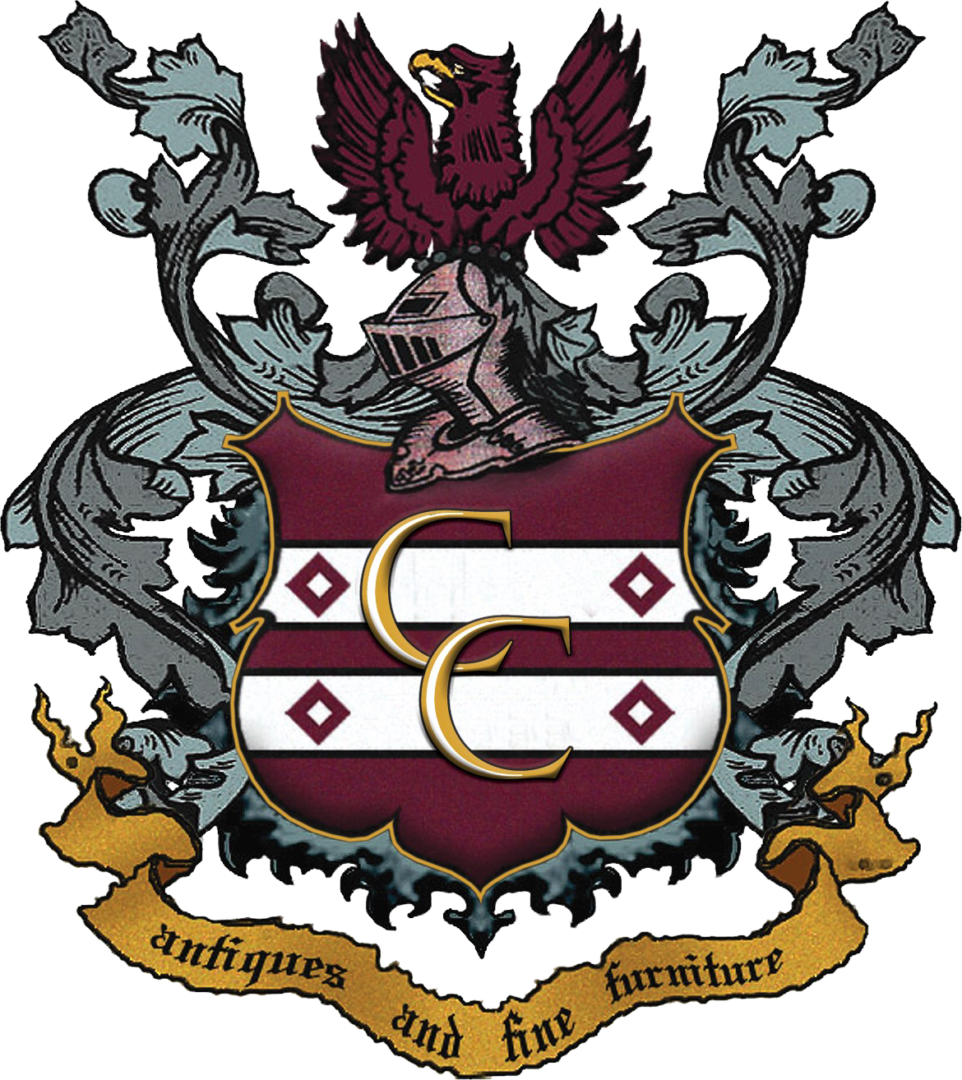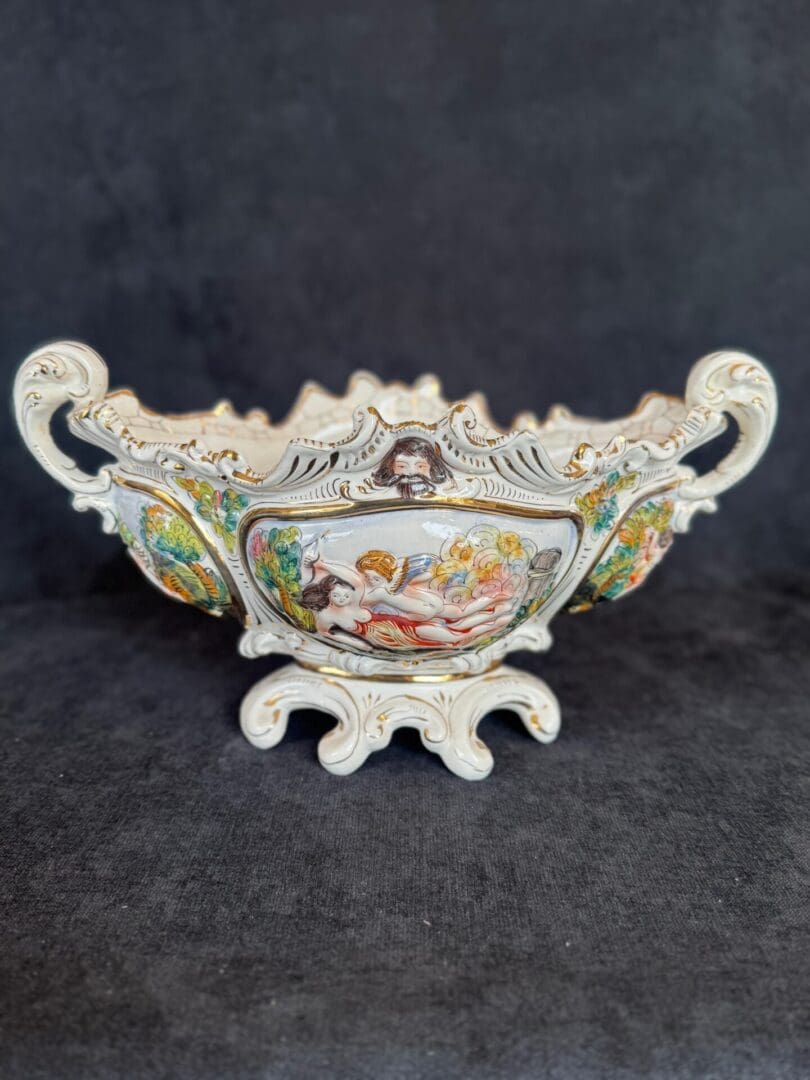Antique Capodimonte hand painted bowl
Original price was: $2,400.00.$1,950.00Current price is: $1,950.00.
Antique Capodimonte bowl 8.75 tall x 15 wide x 7 deep
This is a fine example of a Capodimonte porcelain bowl, crafted in Italy during the early 1900’s, drawing on Rococo Revival influences that mirror the opulence of the 18th century. The bowl features Intricately molded porcelain with scrolling rocaille edges, ornate acanthus handles, and gilded accents. Lavish hand-painted figural scenes, including cherubs, mythological figures, and romantic clouds, reminiscent of allegorical frescoes from the Baroque and Rococo periods. A relief portrait of a bearded classical deity (possibly Zeus or Neptune), connecting the piece to classical mythology.
The Capodimonte porcelain tradition began in 1743 under King Charles VII of Naples, with a royal factory established in the Capodimonte palace. The factory became renowned for its soft-paste porcelain, praised for its delicate finish and artistic richness. Although the original royal factory was short-lived, the Capodimonte name continued through 19th-century workshops in Naples and beyond, producing revivalist wares for collectors and the aristocracy.
This bowl, like many Capodimonte pieces of the Victorian and Belle Époque periods, was likely created for decorative and display purposes, emphasizing luxury and artistic heritage over utility. It captures the romanticism and ornamentation that defined much of the European decorative arts during the time. In essence, this Capodimonte bowl is not just a decorative item—it’s a tribute to classical art, myth, and 18th-century grandeur, brought forward into a later era of refined collecting.
Description
Antique Capodimonte bowl 8.75 tall x 15 wide x 7 deep
This is a fine example of a Capodimonte porcelain bowl, crafted in Italy during the early 1900’s, drawing on Rococo Revival influences that mirror the opulence of the 18th century. The bowl features Intricately molded porcelain with scrolling rocaille edges, ornate acanthus handles, and gilded accents. Lavish hand-painted figural scenes, including cherubs, mythological figures, and romantic clouds, reminiscent of allegorical frescoes from the Baroque and Rococo periods. A relief portrait of a bearded classical deity (possibly Zeus or Neptune), connecting the piece to classical mythology.
The Capodimonte porcelain tradition began in 1743 under King Charles VII of Naples, with a royal factory established in the Capodimonte palace. The factory became renowned for its soft-paste porcelain, praised for its delicate finish and artistic richness. Although the original royal factory was short-lived, the Capodimonte name continued through 19th-century workshops in Naples and beyond, producing revivalist wares for collectors and the aristocracy.
This bowl, like many Capodimonte pieces of the Victorian and Belle Époque periods, was likely created for decorative and display purposes, emphasizing luxury and artistic heritage over utility. It captures the romanticism and ornamentation that defined much of the European decorative arts during the time. In essence, this Capodimonte bowl is not just a decorative item—it’s a tribute to classical art, myth, and 18th-century grandeur, brought forward into a later era of refined collecting.





